Alabama is home to seven distinct woodpecker species, each contributing to the rich avian diversity of the state.
These charismatic birds are not only known for their distinctive drumming sounds echoing through the woodlands but also for their vibrant plumage and fascinating behaviors.
The woodpeckers found in Alabama include the charismatic Northern Flicker, the striking Pileated Woodpecker, the elusive Red-headed Woodpecker, the Hairy Woodpecker with its robust size, and the uncommon Yellow-bellied Sapsucker.
Each species plays a unique role in the intricate ecosystem, demonstrating the resilience and adaptability of these remarkable birds in Alabama’s varied landscapes.
Exploring the characteristics and habitats of these woodpeckers provides a captivating glimpse into the avian tapestry of the state.
Is Alabama A Good Place for Woodpeckers?
Alabama proves to be a favorable habitat for woodpeckers, hosting seven distinct species. The state’s diverse landscapes, encompassing forests, woodlands, and open spaces, offer a variety of environments for these birds.
With ample tree cover and an abundance of insects, Alabama provides an ideal setting for woodpeckers to thrive. The state’s commitment to conservation and maintaining natural habitats further enhances the suitability of these avian inhabitants.
Whether in urban or rural settings, Alabama’s combination of ecological richness and varied terrain makes it a good place for woodpeckers, ensuring they play a vital role in the state’s vibrant ecosystem.
7 Types of Woodpeckers in Alabama
Alabama boasts diverse woodpeckers, with seven distinct species gracing its landscapes.
From the Northern Flicker’s rhythmic drumming to the Pileated Woodpecker’s vibrant plumage, these birds add a captivating dimension to Alabama’s natural beauty.
1. Pileated Woodpecker

- Scientific Name: Dryocopus pileatus
- Category: Woodpecker
- Population: Stable
- Life Span: 7-10 years
- Size: 16-19 inches
- Weight: 8-12 ounces
- Food: Insects, fruits, nuts, and occasionally small vertebrates
- Wingspan: 26-30 inches
- Status: Least Concern
The Pileated Woodpecker, with its striking black and white plumage and prominent red crest, is an iconic inhabitant of Alabama’s woodlands.
Known for its distinctive drumming, this species is adept at excavating large rectangular holes in trees in search of insects. With a stable population, their adaptability to various forest types ensures their presence across the state.
Pileated woodpeckers are territorial and form monogamous pairs. Their impressive size and unique markings make them a captivating sight in Alabama’s wooded areas.
2. Downy Woodpecker
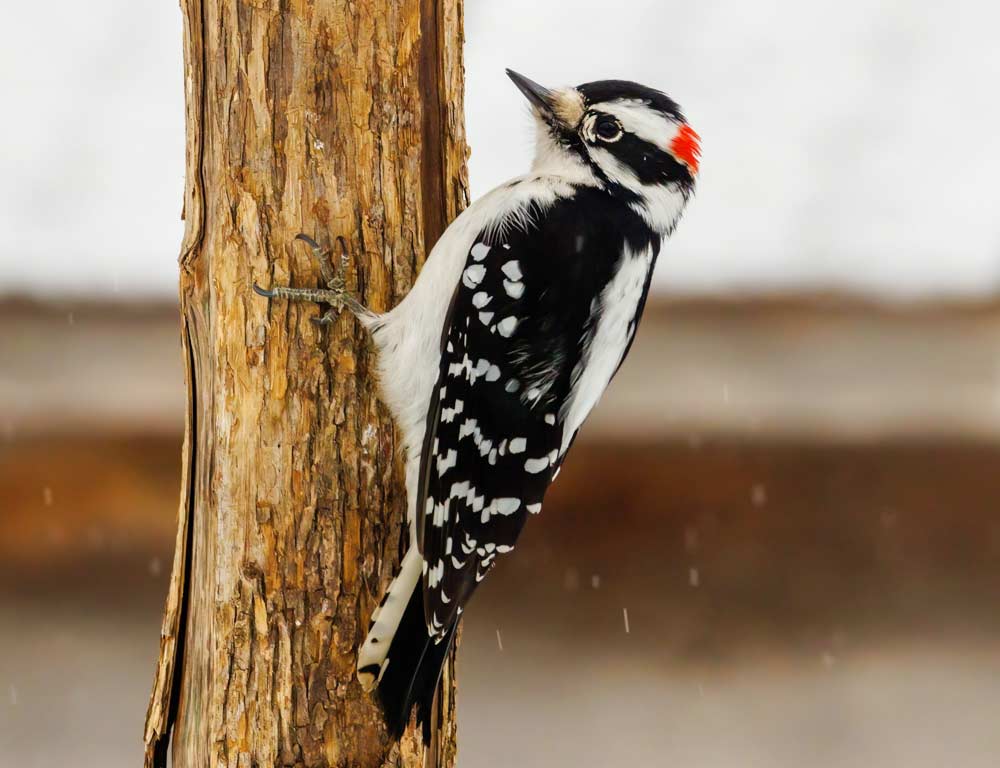
- Scientific Name: Dryobates pubescens
- Category: Woodpecker
- Population: Abundant
- Life Span: 4-7 years
- Size: 5.5-7 inches
- Weight: 0.7-1.0 ounces
- Food: Insects, seeds, berries
- Wingspan: 9-12 inches
- Status: Least Concern
The Downy Woodpecker, Alabama’s smallest woodpecker, is a common and adaptable species found throughout the state. With its distinctive black and white plumage and a small, chisel-like bill, it forages for insects on trees and shrubs.
Known for its drumming and distinctive calls, the Downy Woodpecker thrives in various habitats, from woodlands to urban areas.
Their abundant population and ability to adjust to diverse environments make them a delightful and prevalent presence in Alabama’s avian community.
3. Red-headed Woodpecker
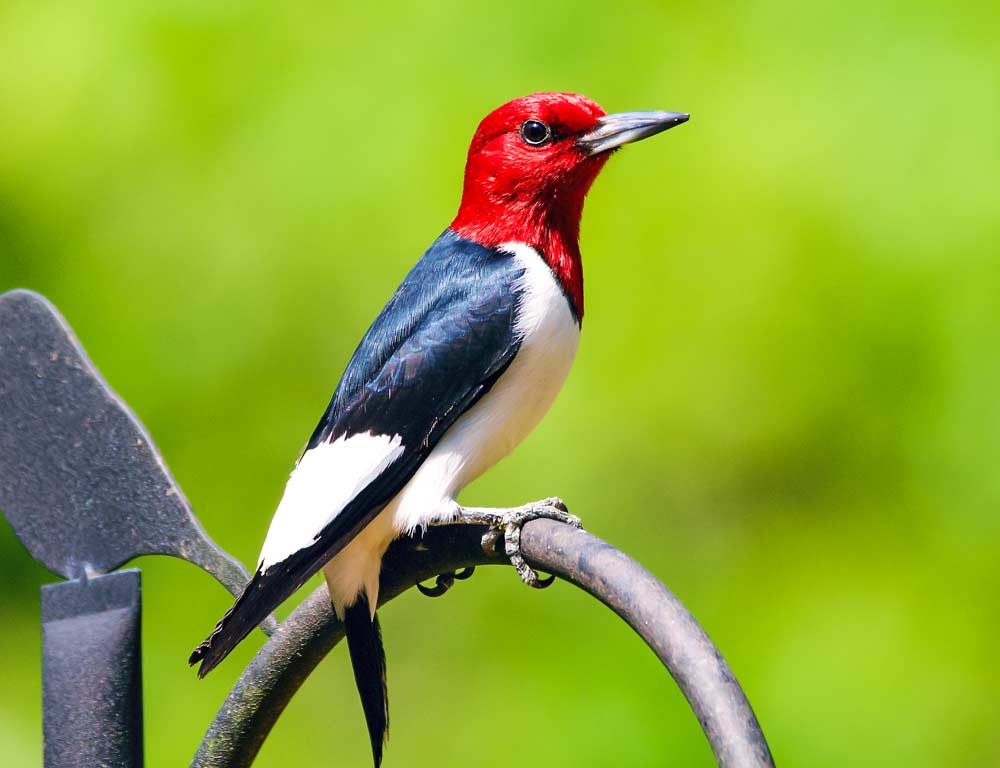
- Scientific Name: Melanerpes erythrocephalus
- Category: Woodpecker
- Population: Declining
- Life Span: 9-12 years
- Size: 7.5-9.1 inches
- Weight: 2.2-3.4 ounces
- Food: Insects, fruits, nuts, seeds
- Wingspan: 16.5-17.7 inches
- Status: Near Threatened
The Red-headed Woodpecker, distinguished by its striking crimson head and vibrant plumage, faces a declining population trend in Alabama.
Inhabiting open woodlands, their decline is attributed to habitat loss and competition for nesting sites. This species is known for its acrobatic flight and diverse diet, ranging from insects to small vertebrates.
Conservation efforts are crucial to safeguard the Red-headed Woodpecker’s future in Alabama, as their unique appearance and ecological role make them a valuable component of the state’s biodiversity.
4. Northern Flicker
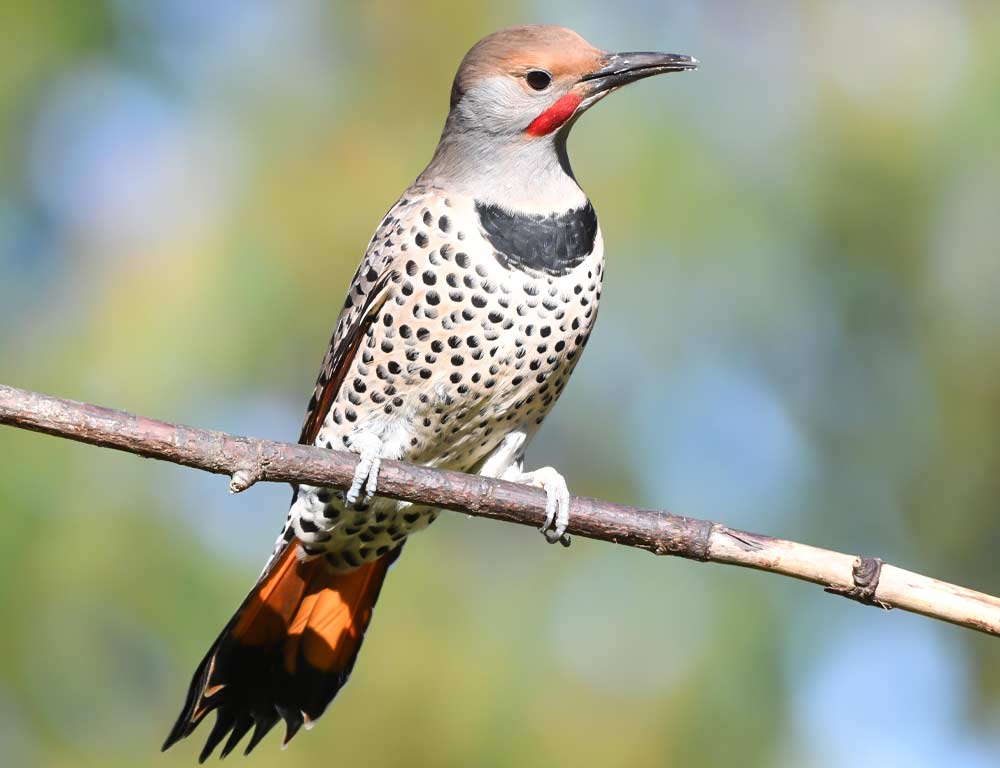
- Scientific Name: Colaptes auratus
- Category: Woodpecker
- Population: Stable
- Life Span: 6-8 years
- Size: 11-14 inches
- Weight: 3-5 ounces
- Food: Insects, fruits, seeds, and ants
- Wingspan: 16-21 inches
- Status: Least Concern
The Northern Flicker, with its unique appearance marked by a beige coloration and conspicuous black bars, is a common and adaptable woodpecker in Alabama.
Found in various habitats, from woodlands to open areas, they are known for ground feeding and drumming on trees to communicate.
Their stable population and diverse diet contribute to their success in the state, making them a charismatic addition to Alabama’s avian diversity.
5. Red-bellied Woodpecker
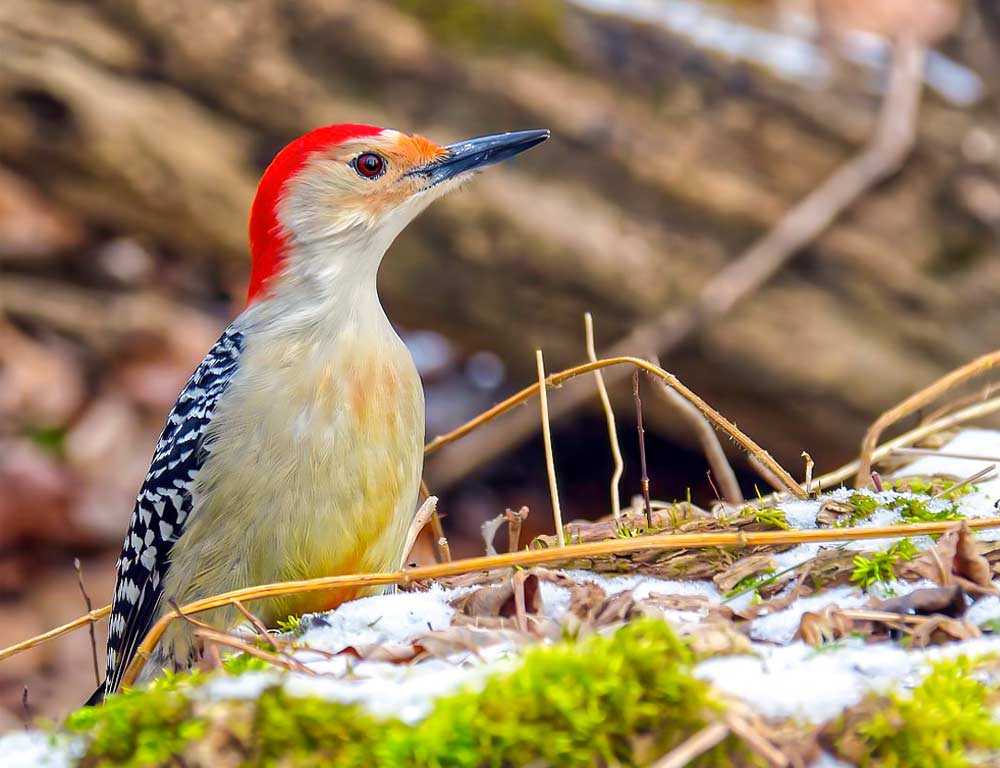
- Scientific Name: Melanerpes carolinus
- Category: Woodpecker
- Population: Abundant
- Life Span: 9-12 years
- Size: 9-10.5 inches
- Weight: 2-3.2 ounces
- Food: Insects, fruits, seeds
- Wingspan: 13-16 inches
- Status: Least Concern
Despite its name, the Red-bellied Woodpecker typically has only a faint red wash on its belly. This adaptable and vocal species is widespread in Alabama, thriving in various wooded environments, including forests and suburban areas.
Recognizable by its distinctive zebra-striped back, the Red-bellied Woodpecker’s abundance and adaptability make it a familiar and welcome presence in the state’s birding community.
6. Yellow-bellied Sapsucker
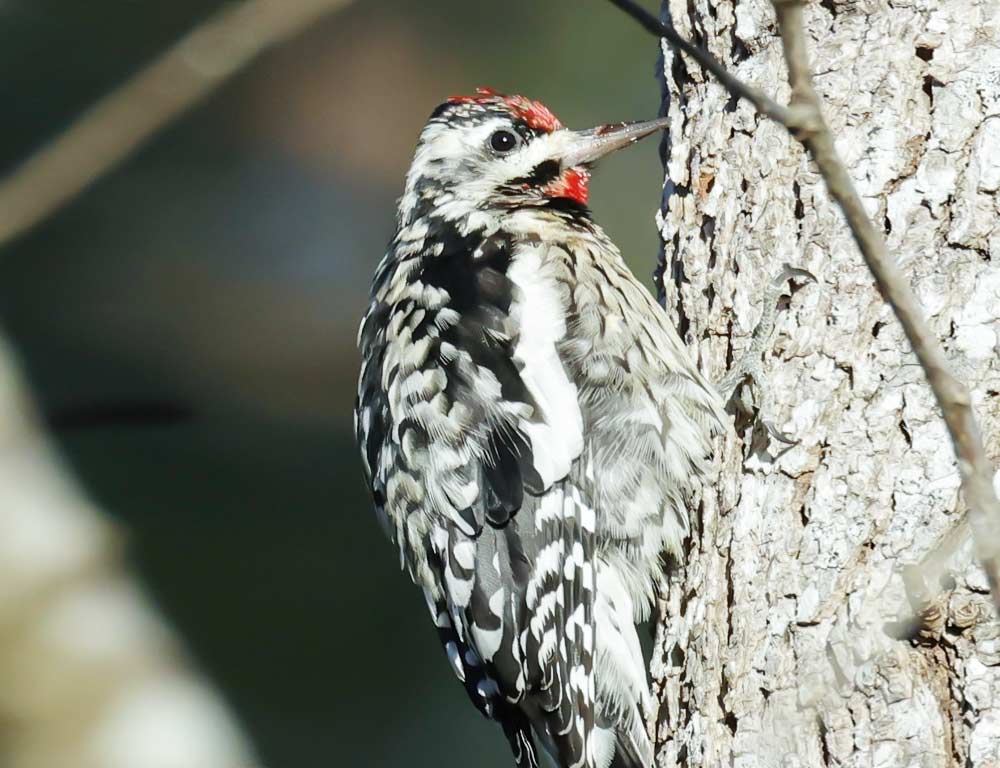
- Scientific Name: Sphyrapicus varius
- Category: Woodpecker
- Population: Stable
- Life Span: 4-7 years
- Size: 7-8.5 inches
- Weight: 1.5-2.4 ounces
- Food: Sap, insects, fruits
- Wingspan: 12-15 inches
- Status: Least Concern
The Yellow-bellied Sapsucker, with its distinct black and white plumage and a hint of yellow on the belly, is a migratory woodpecker found in Alabama during certain seasons.
Known for drilling rows of sap wells in trees and feeding on the sap and insects attracted to it, this species plays a unique ecological role.
Their stable population and migratory behavior add to the dynamic nature of Alabama’s woodpecker community.
7. Red-cockaded Woodpecker
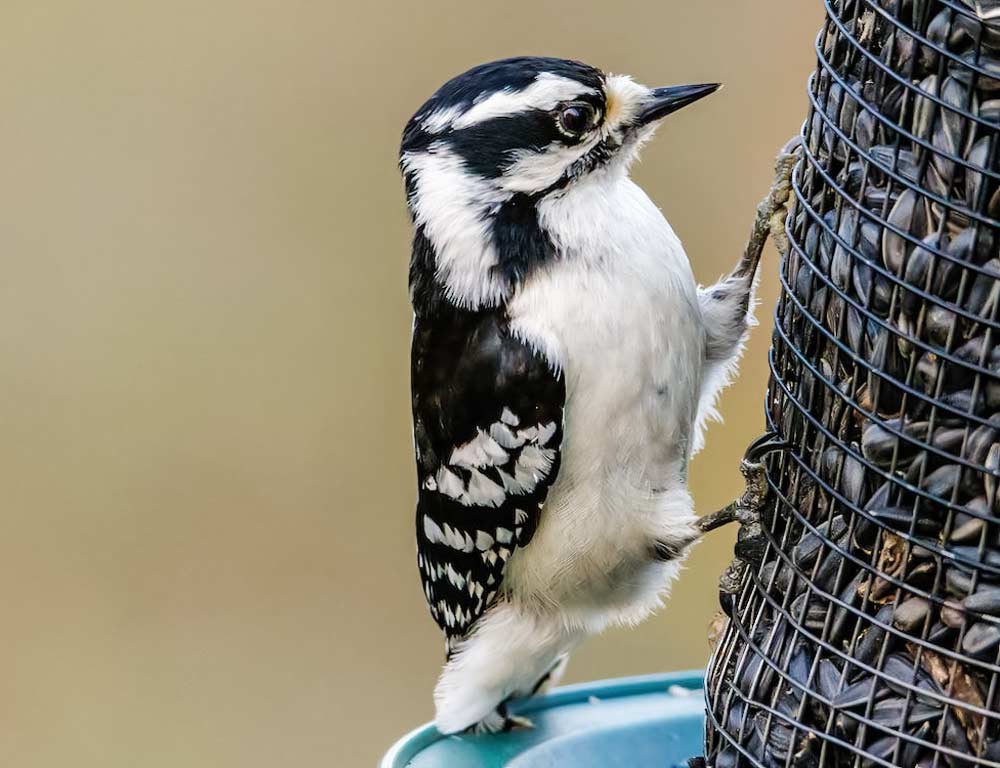
- Scientific Name: Leuconotopicus borealis
- Category: Woodpecker
- Population: Declining
- Life Span: 4-5 years
- Size: 7-9 inches
- Weight: 1.6-2.3 ounces
- Food: Insects, spiders, and tree sap
- Wingspan: 13-16 inches
- Status: Near Threatened
The Red-cockaded Woodpecker, a federally endangered species, faces challenges in Alabama due to habitat loss.
Typically found in mature pine forests, they excavate cavities in live pine trees for nesting. Conservation efforts are crucial for their survival, as the decline in suitable habitat has decreased their population.
The Red-cockaded Woodpecker’s specialized needs make it a priority for conservation initiatives in Alabama, highlighting the importance of protecting their unique habitats.
How to Preserve Woodpeckers of Alabama?
Preserving the woodpecker populations in Alabama is crucial for maintaining biodiversity and ecological balance. Here are six descriptive points on how to effectively preserve woodpeckers in the state:
Habitat Conservation
Identify and protect crucial habitats, such as mature forests and woodlands, where woodpeckers nest and forage.
Implement sustainable forestry practices that maintain suitable tree densities and structures required by different woodpecker species.
Create Protected Areas
Establish and maintain protected areas and reserves that specifically cater to the needs of woodpeckers, ensuring minimal disturbance and encroachment.
Promote Public Awareness
Conduct educational campaigns to raise awareness about the importance of woodpeckers in maintaining ecosystem health.
Encourage responsible birdwatching and outdoor activities to minimize disturbance to nesting sites and foraging areas.
Invasive Species Management
Implement strategies to control and manage invasive species that may compete with woodpeckers for nesting sites or disrupt their food sources.
Research and Monitoring
Support scientific research on woodpecker populations, behaviors, and habitat requirements to better inform conservation strategies. Implement regular monitoring programs to assess population trends and identify potential threats early on.
Collaborative Conservation Efforts
Collaborate with government agencies, non-profit organizations, and local communities to develop and implement comprehensive conservation plans.
Engage in habitat restoration projects to create or enhance suitable woodpecker habitats, involving local communities in the process.
By adopting these measures, Alabama can contribute significantly to the preservation of woodpeckers, ensuring that these iconic birds continue to thrive in the state’s diverse ecosystems.
Wrapping Up
Safeguarding the woodpeckers of Alabama demands a concerted effort. By prioritizing habitat conservation, raising public awareness, and engaging in collaborative research and management, we can secure the future of these charismatic birds.
Preserving their diverse habitats, managing invasive species, and actively involving local communities are integral to maintaining a balanced and thriving ecosystem.
It is imperative that we recognize the ecological importance of woodpeckers and commit to the long-term conservation of their habitats to ensure their continued presence in Alabama’s natural landscapes.